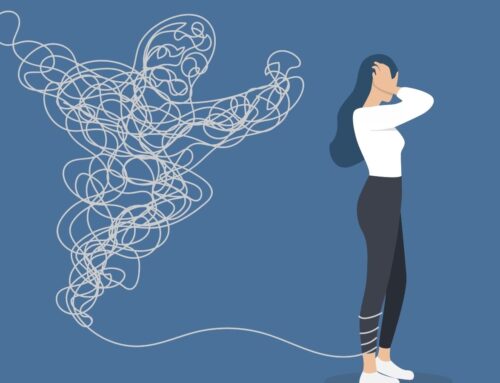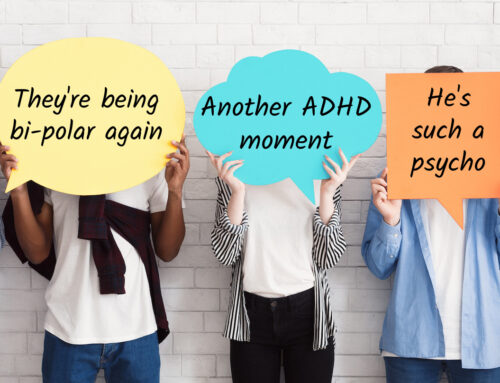I once had a meditation teacher who spent a whole class on the perils of scratching an itch. If this sounds silly, the topic of itch-scratching is a deep well of philosophical symbolism. When you’re sitting for meditation, and the urge to scratch arises, it can feel all-consuming. The little tingle on the edge of your nose calls to you. You shush it. But when it begins to burn fiercely — when you have lost sight of anything other than that tiny pin-sized point on your nose, when you begin to believe that you really might have an aneurysm if you don’t scratch — what should you do?
My teacher would have cautioned against scratching because it reinforces the feeling that the itch is unbearable. Of course, in reality, we all know that you can’t really die from not scratching an itch. But in the moment, an unpleasant feeling can feel all-consuming, and your mental energy fixates on making it go away. You lose sight of the fact that it is temporary and that you can endure it. While the first one hundred itches that you let burn will feel like fire, eventually, your brain adjusts — you start to see that unpleasant sensations come and go with just as much transience as pleasant ones.
Learning about radical acceptance from Anna Passyn, a Licensed Professional Counselor at Georgetown Psychology, I was reminded of this teacher…
What is “radical acceptance” anyways?
Passyn calls radical acceptance the art of “sitting with the itchiness of things.” By “itchy,” she means the unpleasant feelings, emotions, and memories that life stirs up. Radical acceptance helps you make peace with the presence of the unpleasantness and let it exist as a normal, acceptable, and endurable part of your human experience. “The emphasis is in learning that all feelings are normal — happy, sad, motivated, distressed — and learning to tolerate the ones we label as negative.”
Imagine you are at a dinner party (after your vaccine, of course) and you begin to feel social anxiety creep in. Without radical acceptance, most of us would turn to distraction (checking your phone), avoidance (leaving the party early), or negative self-talk (deciding all the guests probably think you’re dull). The trouble with these three reactions is that they magnify the discomfort — they focus on the itch. “Radical acceptance is being an observer of your own discomfort and not getting sucked into it meaning anything reflective about you,” says Passyn.
So, how does one practice radical acceptance?
In order to master this zen-like observational mentality towards discomfort, you have to practice letting discomfort be and learning that you can come out the other side okay.
Passyn helps her clients identify the contexts in which discomfort arises and then describe the physical sensations, thoughts, and emotions that accompany it.
The next step is to stay present. Greet the discomfort, stay with it, don’t try to get rid of it. Passyn encourages her clients to keep the discomfort at a bearable level of intensity while practicing radical acceptance and to gradually and intentionally increase their intensity over time. “The more you’re in situations that require [radical acceptance], the better off you are. You’re engaging in a behavior that creates some distress. In doing so, you’re learning that you can stay and be a little uncomfortable and that it can be okay.”
How can radical acceptance make a difference this fall?
For both parents and children, this fall is going to light up the full spectrum of emotions — from extremely pleasant to extremely unpleasant. We will feel intense excitement at the prospect of a normal(ish) school year, and we will feel equally intense anxiety. Emotions may flip-flop unexpectedly and situations we thought we were ready for might surprisingly stir up fear. Radical acceptance can help you and your children prepare for this.
For children, they can start identifying what they are nervous about now and “training” their radical acceptance muscles. If your child is nervous about seeing their friends after falling out of touch during the pandemic, he or she can wade into those nerves. You can help your child by suggesting he sends a text message to an old friend. Then, you can sit with him and talk about whatever emotions crop up as he waits for a reply. Finally, validate that he made it through the discomfort after it passes. Remember, the goal is not to dispel emotions like anxiety. The goal is for your child to acknowledge the emotion, label how it feels in their body, and gain confidence in their ability to come out the other side okay. The next day or week, perhaps, you could venture a phone call to that same friend.
For parents, watching your child deal with uncomfortable emotions can kick up your own difficult emotions! Use this as an opportunity to model radical acceptance. Try to quiet your own impulse to swoop in and save them from their nerves, sadnesses, or anxieties. Sit with your child while both of you recognize what you are feeling and talk through the strength of letting it be until it passes. Passyn tells parents to “shift the focus away from trying to feel less of the uncomfortable feeling and more toward acknowledging the feeling and not needing to do anything about it or in response to it.” She reminds parents to sit with their child and tell them that feelings can simultaneously “be scary and not harmful.”
By practicing radical acceptance, we learn that our itches might not feel good, but they also are not going to cause us permanent harm. We learn that by staying, the fear-driven need to get rid of them (along with that feeling of spiraling into anxiety) wanes. Eventually, we become radical acceptance warriors, able to allow ourselves the gift of a rich emotional life — one that makes space for both the pleasant and the unpleasant.
If you would like to schedule a session with Anna Passyn, LPC, or any of the other Georgetown Psychology clinicians, click here.






